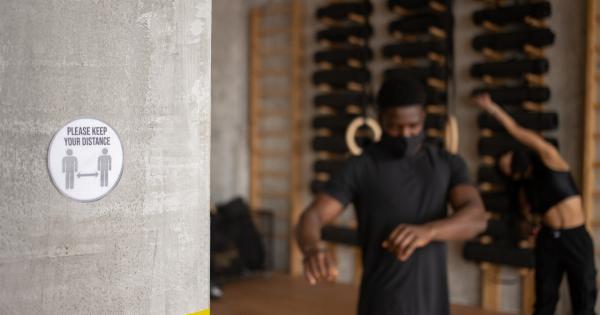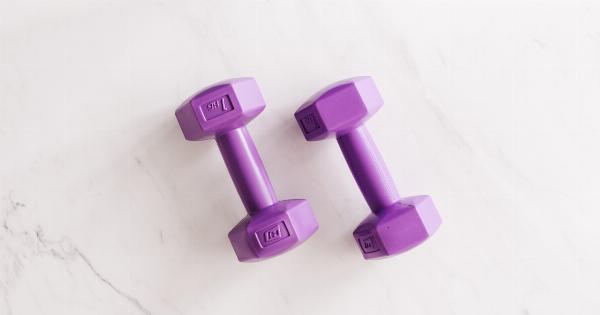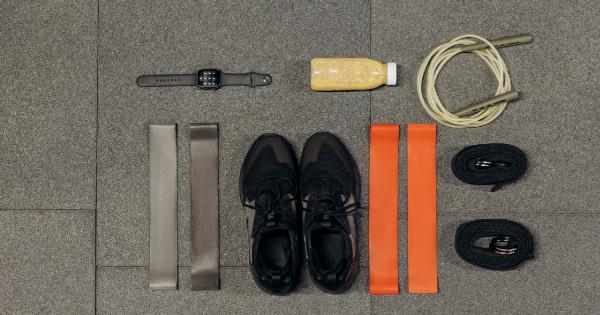Walking is one of the most accessible forms of exercise, and it can have numerous benefits for your health and well-being. Not only does walking help burn calories and maintain a healthy weight, but it also strengthens your muscles, including your core.
By walking at a brisk pace of 100 steps per minute, you can maximize the benefits for your core muscles. In this article, we will explore why walking can be an effective way to strengthen your core and how you can incorporate it into your daily routine.
The Importance of a Strong Core
Your core muscles consist of the muscles in your abdomen, lower back, and pelvis. These muscles provide stability and support to your spine, pelvis, and hips, helping you maintain good posture, balance, and overall body strength.
A strong core not only improves your physical performance but also reduces the risk of injury, especially in the back and hips.
Many people mistakenly believe that core strength is only important for athletes and fitness enthusiasts.
However, a strong core is essential for everyday activities, such as lifting objects, bending over, and even sitting or standing for prolonged periods. By strengthening your core, you can prevent or alleviate common issues like lower back pain and postural problems.
How Walking Benefits Your Core Muscles
Walking is a low-impact exercise that engages multiple muscle groups, including your core muscles. Here are a few ways in which walking can benefit your core:.
1. Engages Core Muscles
When you walk, your core muscles are actively engaged to stabilize your body and maintain balance. This engagement helps strengthen these muscles over time, leading to improved posture and stability.
2. Builds Endurance
Walking regularly at a brisk pace of 100 steps per minute can help improve your endurance levels. As you build endurance, your core muscles will be able to maintain stability for longer periods, reducing the risk of fatigue and injury.
3. Promotes Proper Posture
Walking with proper form promotes good posture, which in turn strengthens your core muscles. It helps align your spine and pelvis, reducing strain on your back and promoting a more efficient use of your core muscles.
4. Burns Calories
Walking briskly at a pace of 100 steps per minute can be an effective way to burn calories and maintain a healthy weight. This can contribute to a leaner waistline and stronger core.
How to Incorporate 100 Steps per Minute into Your Walking Routine
Now that you understand the benefits of walking 100 steps per minute, it’s time to incorporate it into your daily routine. Here are a few tips:.
1. Set a Rhythm
To maintain a pace of 100 steps per minute, it can be helpful to set a rhythm. You can use a metronome app on your phone or find a song with a beat that matches the desired rhythm.
Focus on taking consistent and purposeful steps, keeping your core engaged throughout.
2. Warm Up and Cool Down
Before and after walking, it’s important to warm up and cool down your muscles to prevent injury and promote recovery. Incorporate gentle stretches and mobility exercises for your core muscles to prepare them for the activity.
3. Gradually Increase Intensity
If you are new to walking or have a sedentary lifestyle, it is important to gradually increase the intensity of your walks. Start with a comfortable pace and gradually increase your speed as your fitness improves.
This will help prevent muscle soreness or injury.
4. Use Good Walking Technique
Proper walking technique can make a significant difference in the engagement of your core muscles. Keep your head up, shoulders relaxed, and swing your arms naturally while walking.
Land on your heel and roll through your foot to push off with your toes, engaging your core throughout the motion.
5. Add Variety
To keep your walking routine interesting and challenge your core muscles from different angles, consider adding variety. Incorporate inclines, slopes, or stairs into your route to increase the workload on your core and lower body muscles.
6. Track Your Progress
Use a fitness tracker or smartphone app to monitor your steps and progress. Gradually increase your steps per minute or set distance goals to continually challenge and improve your core strength.
Conclusion
Walking at a brisk pace of 100 steps per minute can be a simple yet effective way to strengthen your core muscles. By engaging your core, promoting proper posture, and building endurance, walking can help you achieve a stronger, more stable core.
Incorporate the tips mentioned in this article into your walking routine and enjoy the many benefits it has to offer.




























